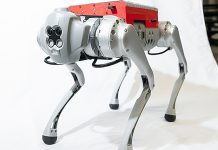
The future of drones may take its biggest leap forward by looking back to nature.
Researchers at the University of Surrey are developing a new type of drone that mimics the flight skills of birds of prey, promising a breakthrough in how unmanned aerial vehicles (UAVs) navigate tight and turbulent environments.
The project, called Learning2Fly, focuses on creating fixed-wing drones that can perform agile maneuvers such as perching, weaving through obstacles, or adjusting smoothly to sudden gusts of wind.
Unlike rotary-wing drones, which hover well but consume a lot of energy, fixed-wing drones are much more efficient and capable of flying long distances.
This makes them better suited for jobs like inspecting offshore wind farms.
However, their drawback has always been poor maneuverability in complex spaces—something the Surrey team is determined to change.
Dr. Olaf Marxen, Senior Lecturer in Surrey’s School of Engineering, explained that the team is drawing inspiration directly from nature.
“Birds of prey are masters of precision flight. They can swoop, turn, and perch with remarkable accuracy, even in difficult conditions.
By studying their aerodynamics, we hope to give fixed-wing drones the same agility—making them smarter, more adaptable, and better suited for dense cities or windy offshore sites.”
To achieve this, the team is combining experimental flight tests with machine learning.
Instead of relying solely on computer simulations, which are often too slow and costly for turbulent conditions, the researchers are building and testing lightweight drone prototypes in Surrey’s motion capture lab.
Some of these early models are adapted from simple toy planes. Using high-speed cameras and onboard sensors, they record how the drones move in 3D. This data is then fed into algorithms that help the UAVs predict and control their motion in real time, much like a bird instinctively adjusting its wings mid-flight.
The goal is to create drones that can fly with bird-like agility while maintaining the efficiency of fixed-wing designs. Early results have been encouraging.
Ph.D. student Owen Wastell, who co-leads the project with Dr. Marxen, said, “It’s exciting to see how well the drones perform even at this early stage. It shows that, even in an age of advanced machines, some of our best ideas still come from the natural world.”
The next stage of the project involves testing outdoors to see how the drones handle real wind conditions and complex environments.
If successful, the research could lead to a new generation of UAVs capable of safe package deliveries in crowded cities, precise inspections of offshore wind farms, and many other applications where efficiency and agility are equally essential.
By learning from the flight paths of owls and hawks, Surrey’s engineers hope to unlock smarter, more sustainable drone technology—reminding us once again that nature remains one of humanity’s greatest teachers.



